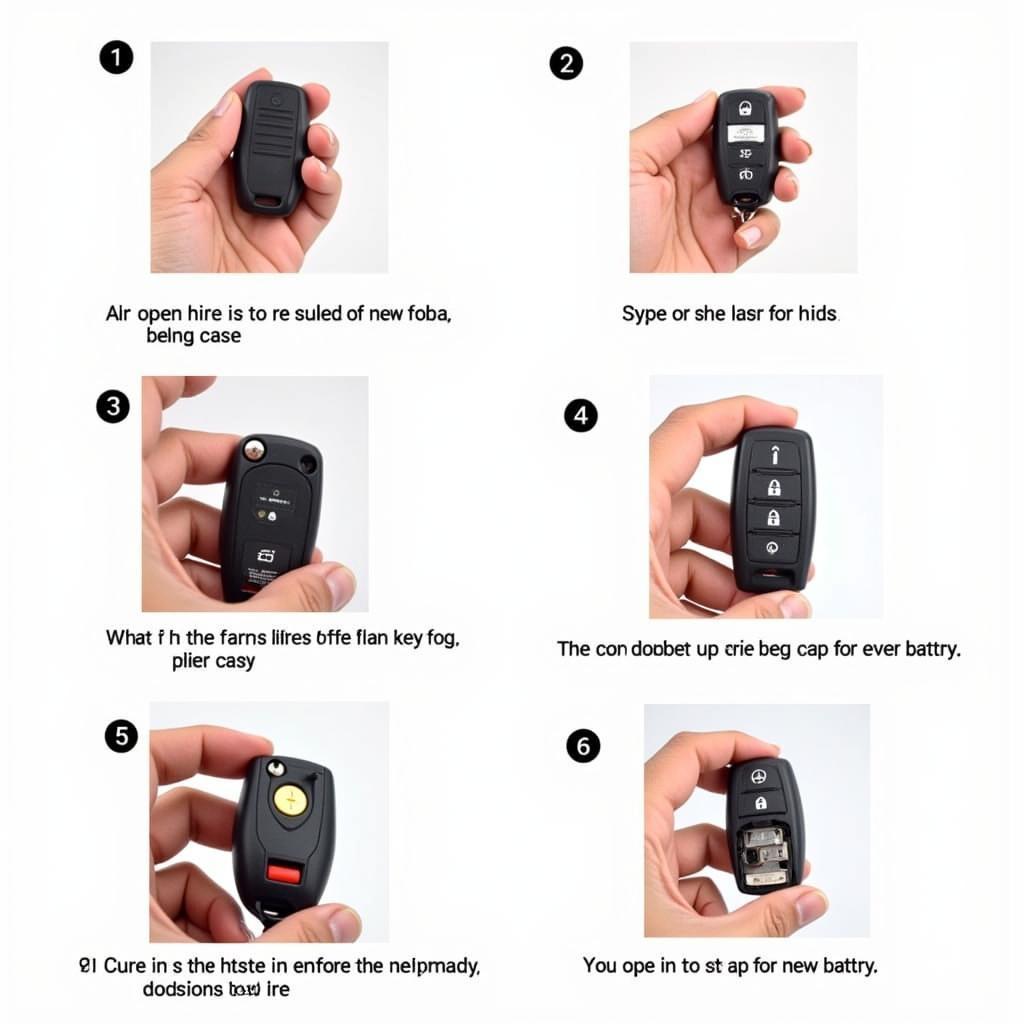The 2017 Nissan Juke key fob is a sophisticated piece of technology that allows you to conveniently lock, unlock, and start your car with just a push of a button. Like all key fobs, it relies on a battery to power its functions. Over time, this battery will inevitably drain, requiring a replacement to keep your key fob working flawlessly.
This comprehensive guide will walk you through everything you need to know about your 2017 Nissan Juke Key Fob Battery, from identifying signs of a dying battery to replacing it yourself and troubleshooting common issues.
Recognizing a Dying Key Fob Battery
Before you rush to replace your 2017 Nissan Juke key fob battery, it’s helpful to recognize the telltale signs of a dying battery. Here are a few indicators that it might be time for a replacement:
- Decreased Range: You notice that you need to be much closer to your car for the key fob to lock, unlock, or start the engine.
- Intermittent Functioning: The key fob works sporadically, sometimes requiring multiple button presses to elicit a response.
- Warning Lights and Messages: Your Juke may display warning lights on the dashboard or chime, indicating a low key fob battery.
- Physical Inspection: If you have a spare key fob, compare the responsiveness of both. A sluggish response from one compared to the other can point to a battery issue.
 2017 Nissan Juke Key Fob Range Indicator
2017 Nissan Juke Key Fob Range Indicator
2017 Nissan Juke Key Fob Battery Replacement: A Step-by-Step Guide
Replacing the battery in your 2017 Nissan Juke key fob is a relatively straightforward process that you can easily accomplish at home with just a few tools. Follow these simple steps:
-
Gather Your Supplies: You’ll need a CR2032 battery (widely available online and at most stores), a small flat-head screwdriver or a plastic pry tool, and your 2017 Nissan Juke key fob.
-
Locate the Key Fob’s Groove: On the back of your key fob, you’ll find a small groove or notch.
-
Open the Key Fob: Carefully insert the tip of the flat-head screwdriver or pry tool into the groove and gently pry open the key fob casing. Be careful not to use excessive force, as this could damage the casing.
-
Access the Battery: Once the casing is separated, you’ll see the CR2032 battery nestled inside.
-
Remove and Replace the Battery: Gently pry out the old battery and dispose of it properly. Insert the new CR2032 battery, ensuring the positive (+) side faces upwards.
-
Reassemble the Key Fob: Align the two halves of the key fob casing and press them together firmly until you hear a click, indicating they are securely closed.
 Nissan Juke Key Fob Battery Replacement Steps
Nissan Juke Key Fob Battery Replacement Steps
Troubleshooting Common Key Fob Issues
While a dead battery is the most common culprit behind key fob malfunctions, there are instances where other factors might be at play. Here are some troubleshooting tips:
1. Key Fob Programming: If you’ve replaced the battery and your key fob still doesn’t work, it might need to be reprogrammed. Consult your owner’s manual or contact a Nissan dealership for guidance on reprogramming procedures.
2. Key Fob Receiver Issues: In rare cases, the issue might not lie with the key fob itself but with the receiver in your vehicle. If you suspect this might be the case, it’s best to have your Juke inspected by a qualified mechanic.
3. Physical Damage: Inspect your key fob for any signs of physical damage, such as cracks, loose buttons, or water damage. If you find any damage, it’s crucial to have the key fob repaired or replaced.
 Nissan Juke Key Fob Troubleshooting
Nissan Juke Key Fob Troubleshooting
Conclusion
Keeping your 2017 Nissan Juke key fob in optimal condition ensures seamless access and operation of your vehicle. By understanding the signs of a dying battery, you can proactively replace it and avoid any inconvenience. Remember, if you encounter persistent issues despite troubleshooting, it’s always best to seek professional assistance from a qualified automotive technician.
Don’t let a dead battery leave you stranded! Take charge of your 2017 Nissan Juke’s Key Fob maintenance today.

Leave a Reply